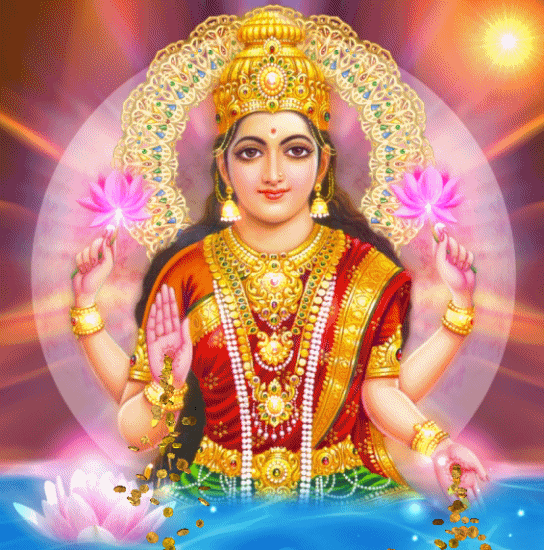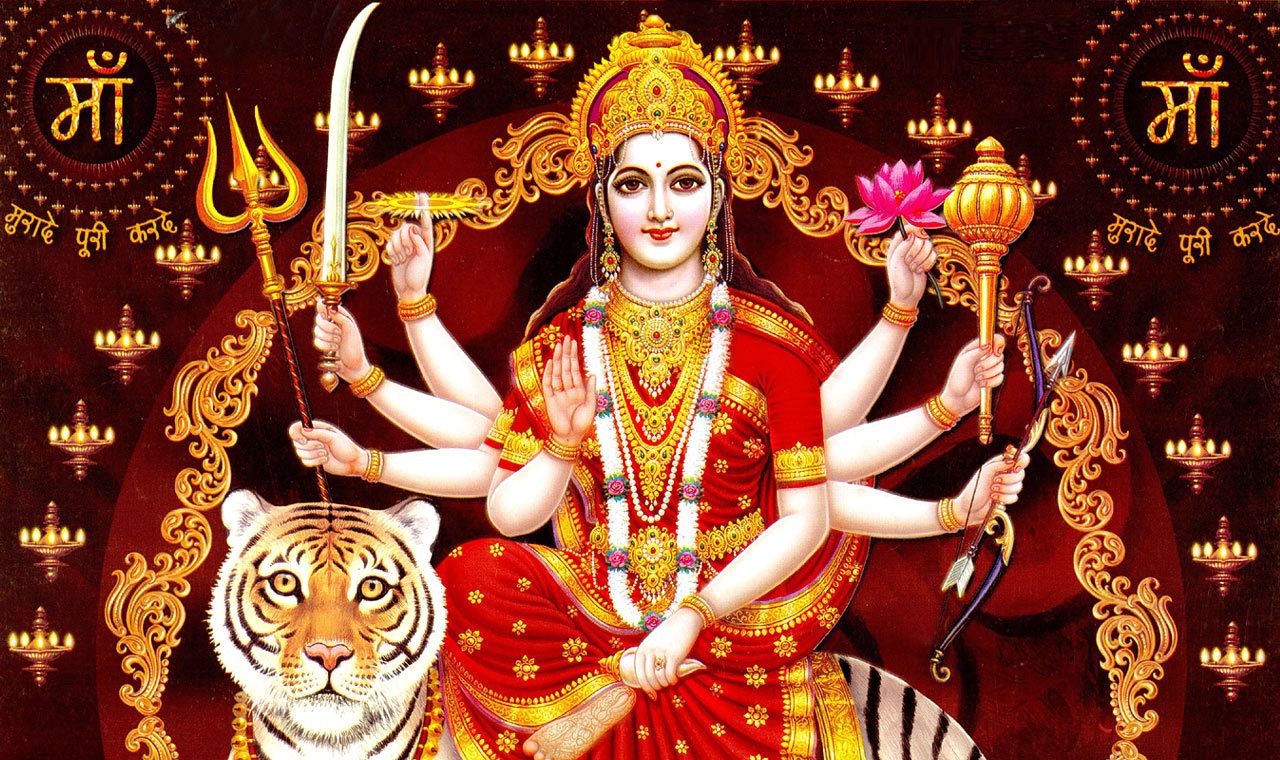No products in the cart.
Saraswati, the goddess of knowledge and arts, represents the free flow of wisdom and consciousness. She is the mother of the Vedas, and chants to her, called the ‘Saraswati Vandana’ often begin and end Vedic lessons.
Saraswati is the daughter of Lord Shiva and Goddess Durga. It is believed that goddess Saraswati endows human beings with the powers of speech, wisdom and learning. She has four hands representing four aspects of human personality in learning: mind, intellect, alertness and ego.
She has sacred scriptures in one hand and a lotus – the symbol of true knowledge – in the second.
With her other two hands she plays the music of love and life on a string instrument called the Veena. She is dressed in white – the symbol of purity – and rides on a white swan – symbolizing Satwah Guna or purity and discrimination. Saraswati is also a prominent figure in Buddhist iconography – the consort of Manjushree.
The learned and the erudite attach greater importance to the worship of goddess Saraswati. As a practice, only educated people worship her for knowledge and wisdom. They believe that only Saraswati can grant them ‘moksha’ – the final liberation of the soul.
Saraswati’s birthday – Vasant Panchami – is a Hindu festival celebrated every year on the 5th day of the bright fortnight of the lunar month of Magha. Hindus celebrate this festival with great fervor in temples, homes and educational institutes alike.
Shrimad Devi Bhagavatam or Devi Purana
The Shrimad Devi Bhagavatam, also known as Devi Purana, was composed into 12 chapters, containing 18000 verses by the great Veda Vyasa.
| Book # | 1 | 2 | 3 | 4 | 5 | 6 | 7 | 8 | 9 | 10 | 11 | 12 | Total |
|---|---|---|---|---|---|---|---|---|---|---|---|---|---|
| Chapters | 20 | 12 | 30 | 25 | 35 | 31 | 40 | 24 | 50 | 13 | 24 | 14 | 318 |
Though classified as an upa purana it is the only purana Vedavyasa called “Maha Purana” meaning the great purana. At the end of each chapter of the 18 main Puranas or the upa puranas is the verse “This is the end of the fifth section of the Vishnu Purana”, or “Thus ends the first chapter of Ganesha Purana Upasana Khanda called “The Description of Somakanta”. Where as in the Devi Bhagavatam it is clearly – “Thus ends the eighth chapter of the first Skandah in the Maha purana Shrimad Devi Bhagavatam of 18,000 verses by Maharshi Vedavyasa”. The choice of words by the great rishis is obvious as Divine Mother is described in all major sastras as the one beyond and above the trinities and all Gods.
 Sage Narayana described the methodology of worship of Devi Saraswati, the powerful manifestation of Mula Prakriti, the Goddess of Knowledge, Mental Faculties, Memory, ‘Mantras’, Literature and Fine Arts. Her symbol is ‘Veena’ (Lute) and Books; Her ‘Vahana’ (Vehicle) is ‘Hamsa’ (Swan) and her male counterpart is Para Brahma. On every Sukla Panchami of Magha month and on the day of commencing education, the worship of Saraswati is to be performed as per Kanva Sakha Yajur Veda hymns, if possible.
Sage Narayana described the methodology of worship of Devi Saraswati, the powerful manifestation of Mula Prakriti, the Goddess of Knowledge, Mental Faculties, Memory, ‘Mantras’, Literature and Fine Arts. Her symbol is ‘Veena’ (Lute) and Books; Her ‘Vahana’ (Vehicle) is ‘Hamsa’ (Swan) and her male counterpart is Para Brahma. On every Sukla Panchami of Magha month and on the day of commencing education, the worship of Saraswati is to be performed as per Kanva Sakha Yajur Veda hymns, if possible.
Being clean, wearing white clothes, white flower garlands, white sandal paste and using white conch shell, one performs Ganesh Puja first, ‘Kalasa Puja’( Vessel with pure water and an inverted Coconut representing the Deity), then Saraswati Vandana and ‘Shodasa Upacharas’ or sixteen types of Services like ‘Avahana’ (Welcome), ‘Asanam’(Seat), ‘Padyam’( Sprinkling Holy water), ‘Arghyam’(A kind of welcome drink), ‘Achamaniyam’( Settling down offer of water), ‘Panchamrita Snanam’( mix of milk, curd, butter, honey, and sugar), ‘Vastra dvayam’ ( two sets of clothing), Sacred Thread or ‘Yagnopaveetham’, ‘Abharanam’ ( ornaments), ‘Gandham’ (Sandal paste), ‘Pushpa Puja’ ( worship with flowers, preferably white),‘Agarbatti dhoopam’ (incense stick burning),‘Deepa darsana’ ( showing of lights of cow ghee soaked vicks), ‘Neerajanam’(Showing of Camphor light), ‘Naivedyam’or offerings of eatables including fruits, ‘MantraPushpam’( Vedic Chanting) and ‘kshmapana’( seeking forgiveness of procedural defects of worship).Devi Saraswati is pleased with the recitation of the Root Mantra, ‘Aim Kleem Sarasvathyai Namah’. Sage Narayana gave this Seed Mantra to Rishi Valmiki on the banks of Ganges and at the time of Solar Eclipse, Sage Bhrigu gave it to Shukracharya at Pushkara Tirtha; Brahma gave it to Bhrigu at Badarika Ashrama, Surya gave it to Yajnavalkya and so on. It is said that any one recites the Mantra four lakh times would attain Siddhas.
Brahma gave the highly energetic Sarasvati Kavacham – kind of defence armour -to a select few and its ‘Vidhana’ or procedure is also provided by Prajapati Brahma Himself. The Kavacham was composed in Brihti Chhandah and its ‘Viniyoga’ or application is for acquiring spiritual knowledge and fulfillment of desires.
Saraswati Kavacham says: –
Aim Srim Hrim Sarasvathyai Svaha: May my entire head be protected;
Srim Vagdevathyai Svaha: my forehead;
Aim Hrim Sarvasvatyai Svaha: to protect my ears always;
Aim Srim Hrim Bhagavatyai Sarasvathyai Svaha: to protect my eyes;
Aim Hrim Vakvadinyai Svaha to protect my nose always;
Aim Hrim Vidyadhisthratri Devyai Svaha to protect my lips always;
Aim Hrim Brahmayai Svaha to protect my teeth;
Aim- (a single word), to protect my neck;
Aim Srim Hrim to protect my throat;
Srim to protect my shoulders;
Aim Hrim Vidyadhistatri Devyai Svaha: my chest;
Aim Hrim Vidyadhiswarupaya Svaha: my navel;
Aim Hrim Klim Vanyai Svaha: my hands;
Aim Sarva Varnatmikayai Swaha: my feet;
Aim Vagadhisthatri Devayai Swaha: my body;
Aim Sarva Kantha Vasinyai Svaha: my east;
Aim Sarvajibhraga Vasinya Svaha: my South East;
Aim Hrim Klim Sarasvathyai Budha jnanayi Svaha: my South;
Aim Hrim Srim Svaha: my West;
Aim Sarvam bikaiya Svaha: my North West;
Aim Srim Klim Gadya Vasinyai Svaha: my North;
Om Hrim Sarva Pujithayai Svaha: my Top;
Aim Pusthaka Vasinyai Svah: my Below;
Aim Grantha Bija Svarupayai Svaha: my Sides.
Saraswati Stotram was performed in all earnestness by Sage Yajnavalka as he was cursed by his Guru Sage Vysampayana; the Guru committed a serious crime of killing a Brahmana and was atoning for the sin for long time by paying penance and Yajnavalka offered to perform the penance all by himself, and the Guru became furious and asked him to vomit all the Mantras of Yajurveda and quit his Ashram. Yajnavalka prayed to Surya Deva who no doubt gave back the same Veda Mantras but asked to pray to Devi Saraswati to return his memory. It was in this context that the Sage meditated the Devi by various hymns that She affixed to Vedas the three significant letters ‘Anusarga’, ‘Visarga’ and ‘Chandravindu’; He recited as per this Substance: “She is the ‘Vyakhya’( exposition) of all ‘Sastras’ and the Presiding Deity of the annotations of these Shastras; that She is the Super Mathematician and invented the count of Numbers and Time; that She is responsible for finalizing ‘Siddhanthas’ ( Definite Conclusions) in guiding enlightened Rishis and Human experts); that She is the mammoth Shakti to provide Memory, Knowledge, Intelligence and Imagination and power of Speech; that She resolved arguments of Bhu Devi and Anantha Deva, the doubts of Maharishi Veda Vyasa and Sage Valmiki about certain doubts of ‘Purana Sutras’, guided Indra and Deva Guru Brihaspati on some critical explanations about ‘Sabda Sastra’; that Vishnu, Mahesh and Brahma prayed to Her and so did Devas, Manus, Maharishis, and of course innumerable humans for their own advantages.” As Yajnavalkya thus meditated and sang potent Hymns to Devi Saraswati, She blessed him with sharp memory and Spiritual Knowledge to and he became an Illustrious and erudite Sage remembered for ages for his contribution of fifteen solid chapters of Vedas called ‘Vajasniya Samhitas’! Even if an ignoramus prays sincerely the Goddess Saraswati for a year regularly, he or she would turn intelligent for sure; a dumb person would gain power of speech and an illiterate would secure the capacity and strong will to get educated.






